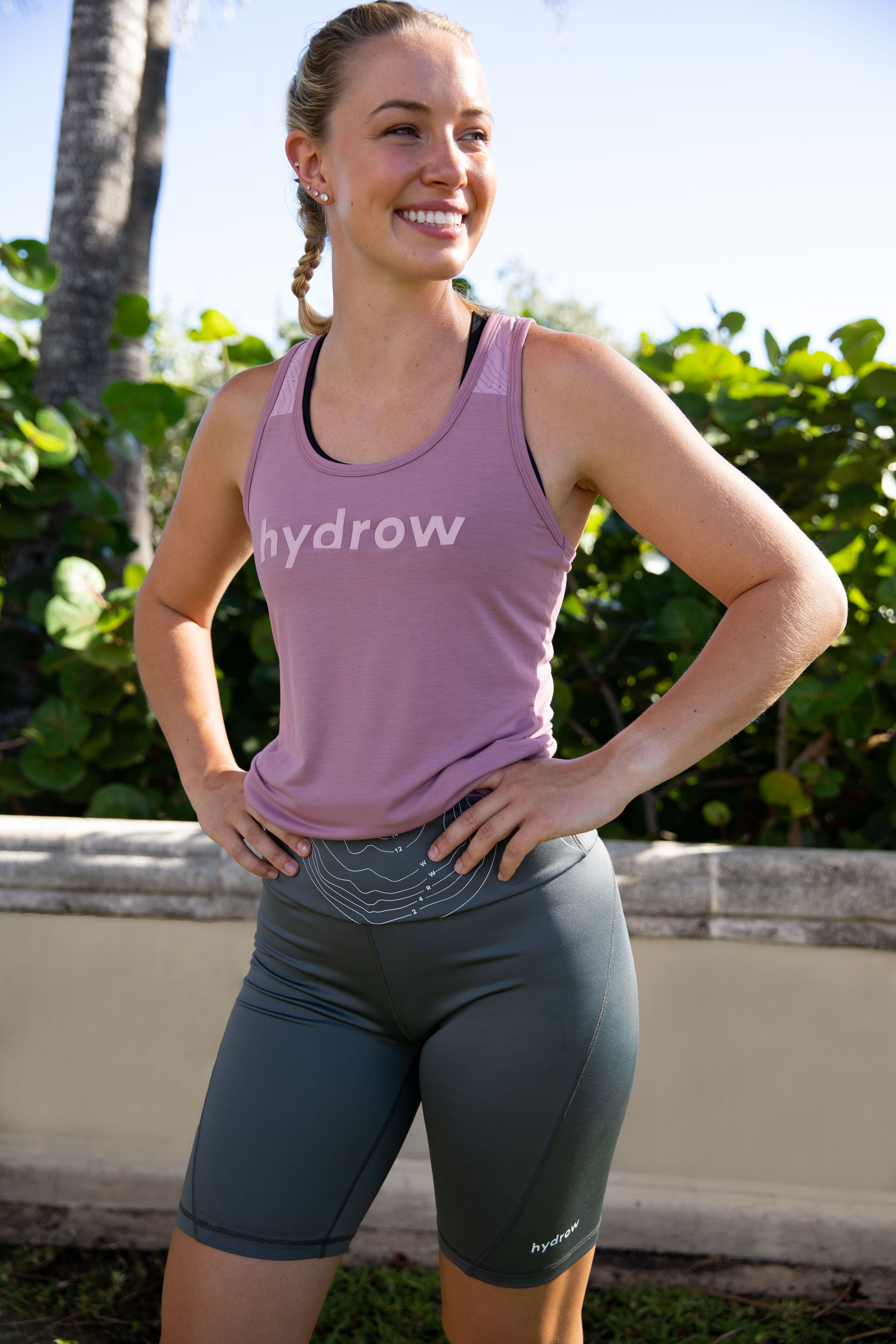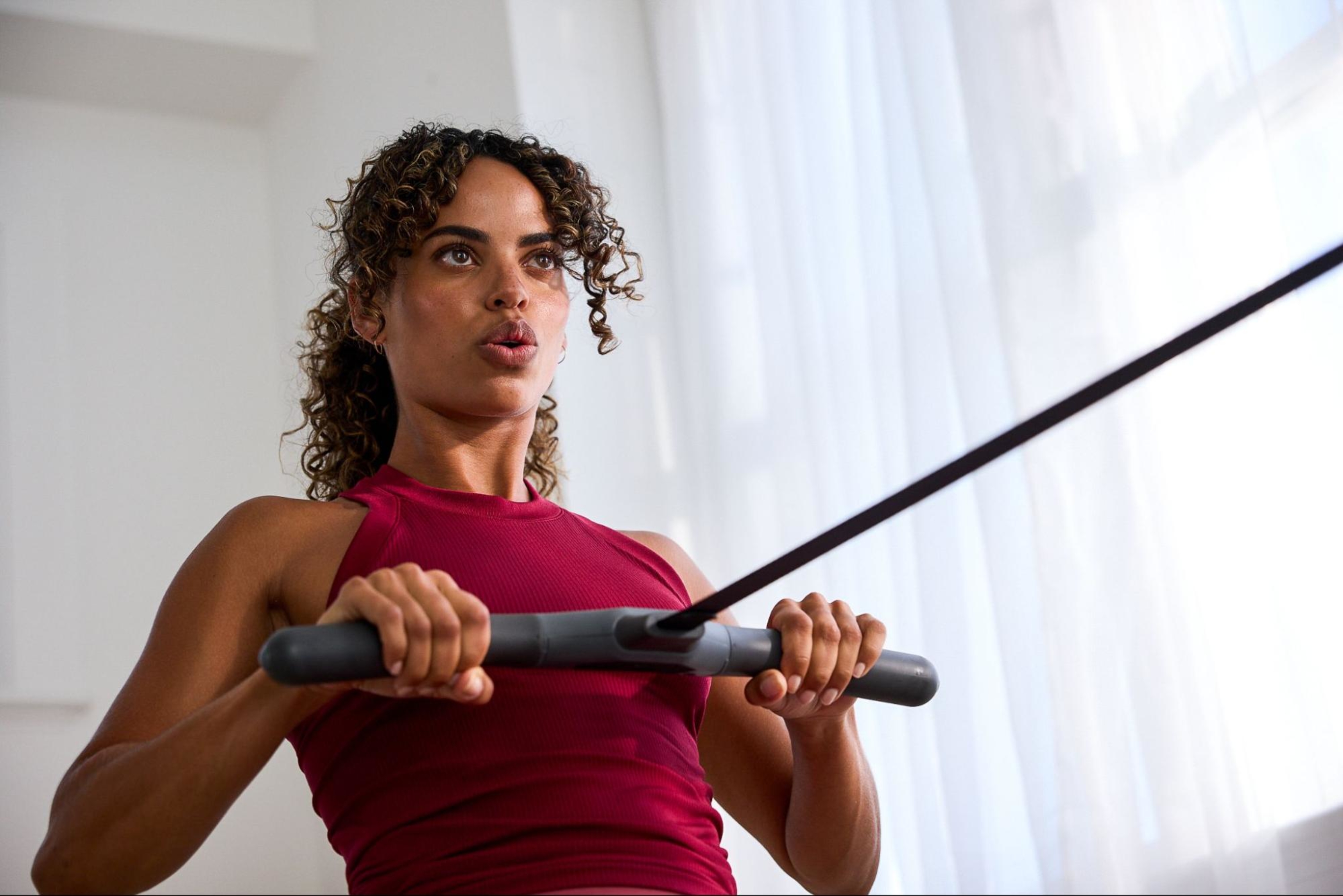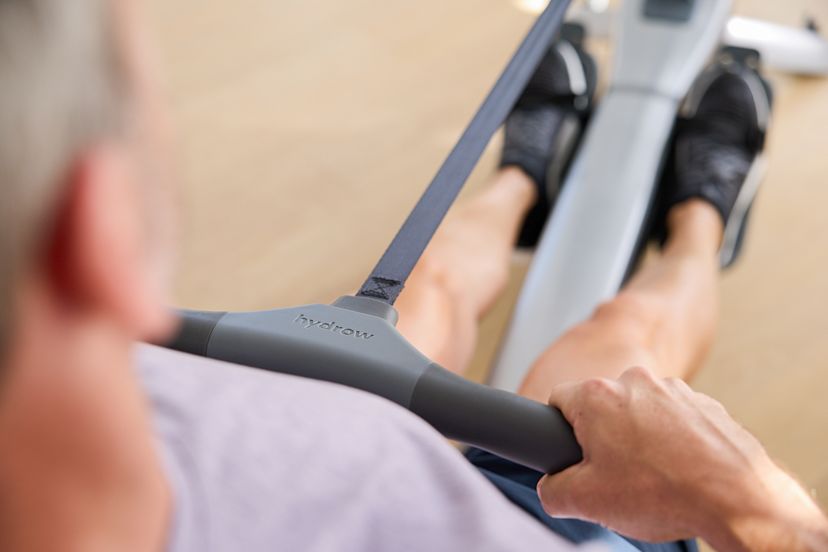What Do the Numbers on Your Rowing Machine Mean?
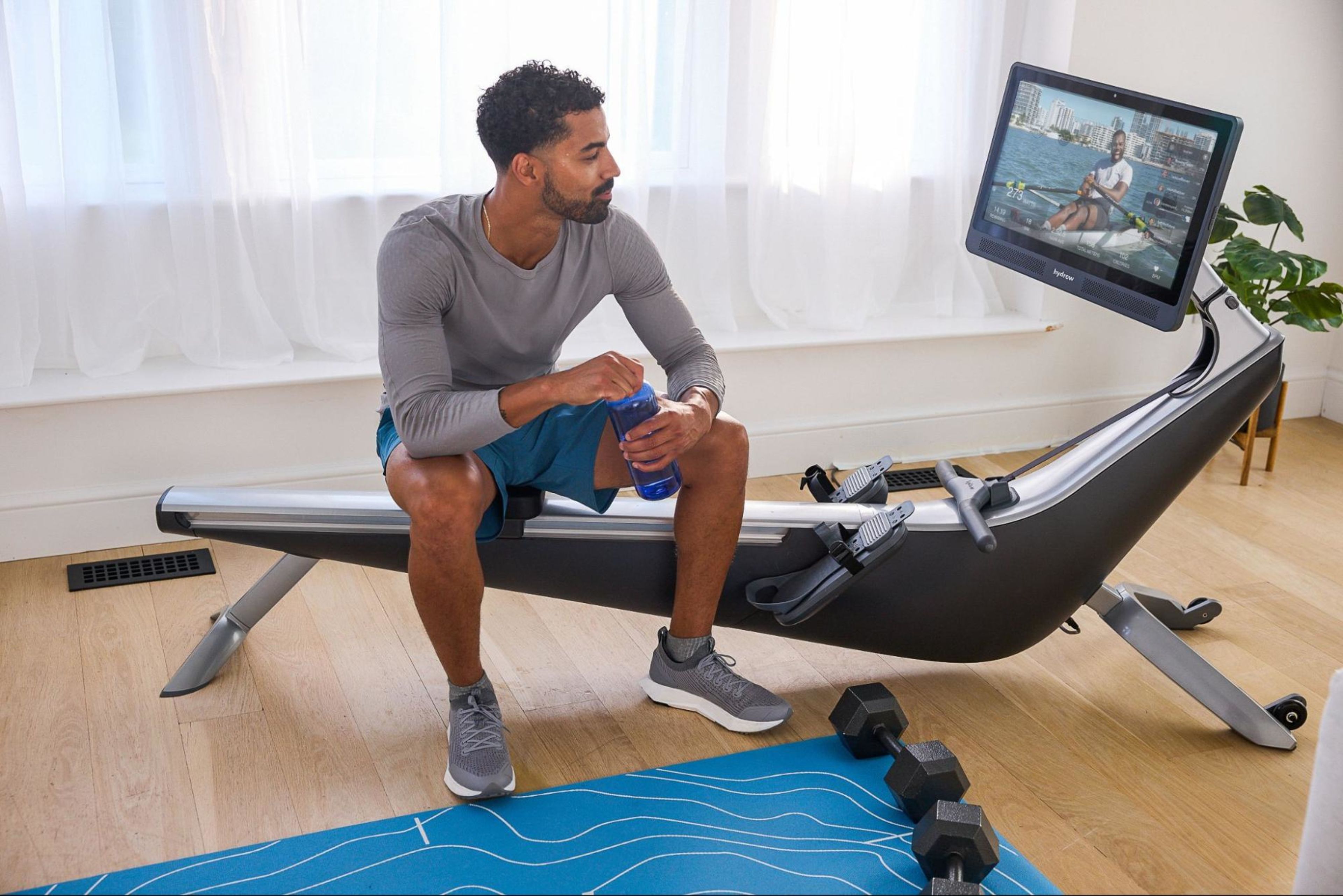
If you’re new to rowing, you may find yourself staring at the numbers on your rowing machine, wondering what they mean and how they impact your workout. Rowing machines are equipped with various metrics that provide detailed insights into your performance, but they can feel overwhelming if you don’t understand exactly what they mean.
In this article, we’ll break down the key numbers you’ll encounter on your rowing machine’s monitor, what they represent, and how you can use them to track your performance, including:
Let’s dive in!
Split time (500-meter pace)
What split time means
Your split time—often labeled as “/500m”—represents how long it takes you to row 500 meters, essentially serving as your speedometer. A lower split time indicates faster rowing, while a higher split time indicates slower rowing. This is one of the most important numbers on your rowing machine because it directly reflects your power, effort, and speed.
Why split time is important
Your split time is one of the best indicators of your overall pace and effort during a workout. Competitive rowers often aim to maintain or decrease their split times over intervals or distances to improve their speed and endurance. For beginners, understanding your average split time can help you set realistic goals for improvement.
Tips to improve your split time
To lower your split time, focus on increasing your power per stroke rather than simply increasing your stroke rate. More power with fewer strokes often leads to faster split times. Practicing strong leg drives and maintaining good rowing form will also help you generate more power and bring down your split time.
Learn more about improving your split time in our blog, “What Is Split Time in Rowing and How Can You Improve?”
Benchmarks for split time
For beginners, a split time between 2:30 to 3:00 per 500 meters is common. More experienced rowers aim for a split of 2:00 or less.
Strokes per minute (S/M or SPM)
What strokes per minute mean
Strokes per minute (S/M or SPM) refers to how many strokes you take in one minute. This is a measure of your rowing stroke rate and helps you understand the tempo of your workout. Rowing with a higher stroke rate will get your heart pumping faster, but if not paired with power, it won’t necessarily translate into faster times.
Why strokes per minute are important
SPM is a key metric for controlling your intensity. A higher SPM indicates faster strokes, while a lower SPM means slower, more deliberate strokes. Striking a balance between a high stroke rate and efficient power application is crucial for maximizing performance.
Tips to improve your strokes per minute
Beginners often think that a faster stroke rate is better, but that’s not always the case. Focus on maintaining a lower, controlled stroke rate (18–24 SPM) while maximizing your power per stroke. As you gain confidence and strength, you can gradually increase your SPM to work at higher intensities.
Benchmarks for strokes per minute
Most recreational rowers work at 20–28 SPM. Competitive rowers often hit 30–36 SPM, especially during sprint and max efforts.
Distance
What distance means
Distance on a rowing machine measures how far you’ve rowed during your workout. This is an accumulation of how many meters you’ve covered based on your stroke length, power, and consistency.
Why distance is important
Tracking your distance helps monitor progress, especially for longer endurance rows. It also gives you a clear target to aim for in each session, whether it’s a 2K time trial, a 5K row, or longer.
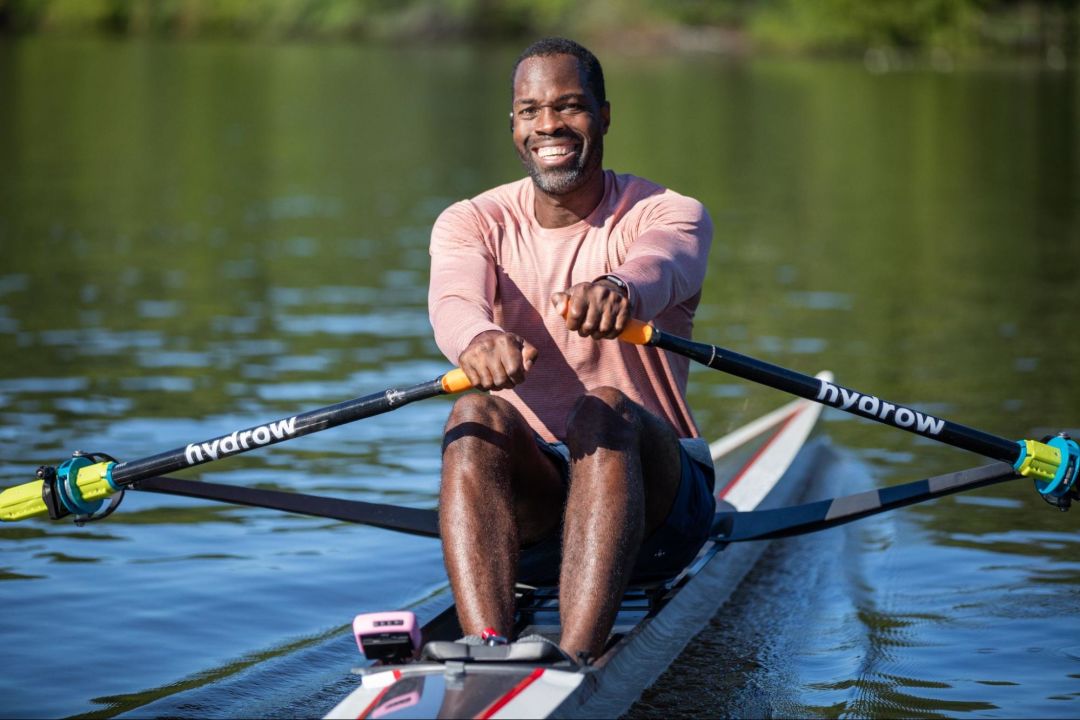
Experience the most immersive and efficient total-body workout with Hydrow.
Tips to improve your distance
Work on sustaining consistent power and stroke efficiency over longer rows. Many beginners fade during longer distances because they either burn out too quickly or don’t pace themselves correctly.
Benchmarks for distance
For a 2K row, competitive rowers often aim for times under 7 minutes, while recreational rowers typically finish in 8–10 minutes.
Watts
What watts means
Watts measure your power output in real time. The higher the wattage, the more power you're applying per stroke. Unlike split time, which reflects pace, watts directly translate into the raw power you’re generating with each stroke.
Why watts are important
Watts give you an immediate measure of how hard you're working. This is especially helpful in interval training, where maintaining or increasing wattage during sprints is key to building power.
Tips to improve your watts
Focus on an explosive drive from your legs and maintaining a strong core. Work on short, powerful intervals to boost your wattage over time.
Benchmarks for watts
Beginners may see wattage around 100–150 watts, while competitive rowers aim for 250+ watts during hard efforts.
Calories burned
What calories burned means
Calories burned is a metric that estimates how many calories you’re expending during your row. It’s based on factors like your weight, effort, and duration of the workout. While it can be a motivating number to watch, remember that it's just an estimate.
Why calories burned is important
This metric helps track energy expenditure, which is useful if you're rowing for weight loss or endurance training. However, don't rely solely on calorie counts, as they can fluctuate based on various factors.
Tips to improve your calories burned
The more intense and longer your rowing session, the more calories you’ll burn. Try adding interval training to increase calorie burn.
Benchmarks for calories burned
A moderate 30-minute row may burn 300–500 calories, but this varies based on intensity and individual body composition.
Final thoughts
While rowing machine metrics may seem overwhelming at first, understanding what the numbers on your rowing machine mean will give you valuable insights into your performance. By focusing on split time, strokes per minute, and distance, you can fine-tune your workouts and track your progress over time. Once you get a grip on these key numbers, your rowing experience will be much more rewarding, allowing you to improve with every stroke.
By paying attention to these metrics and working to improve them, you’ll start to see tangible results in your rowing performance and overall fitness.
Check out more tips to maximize your rowing experience in our blog, “12 Rowing Machine Workouts to Build Muscle, Improve Endurance, and Burn Calories.”

Explore Hydrow
Learn more about how you can transform your fitness routine with a rowing machine.
